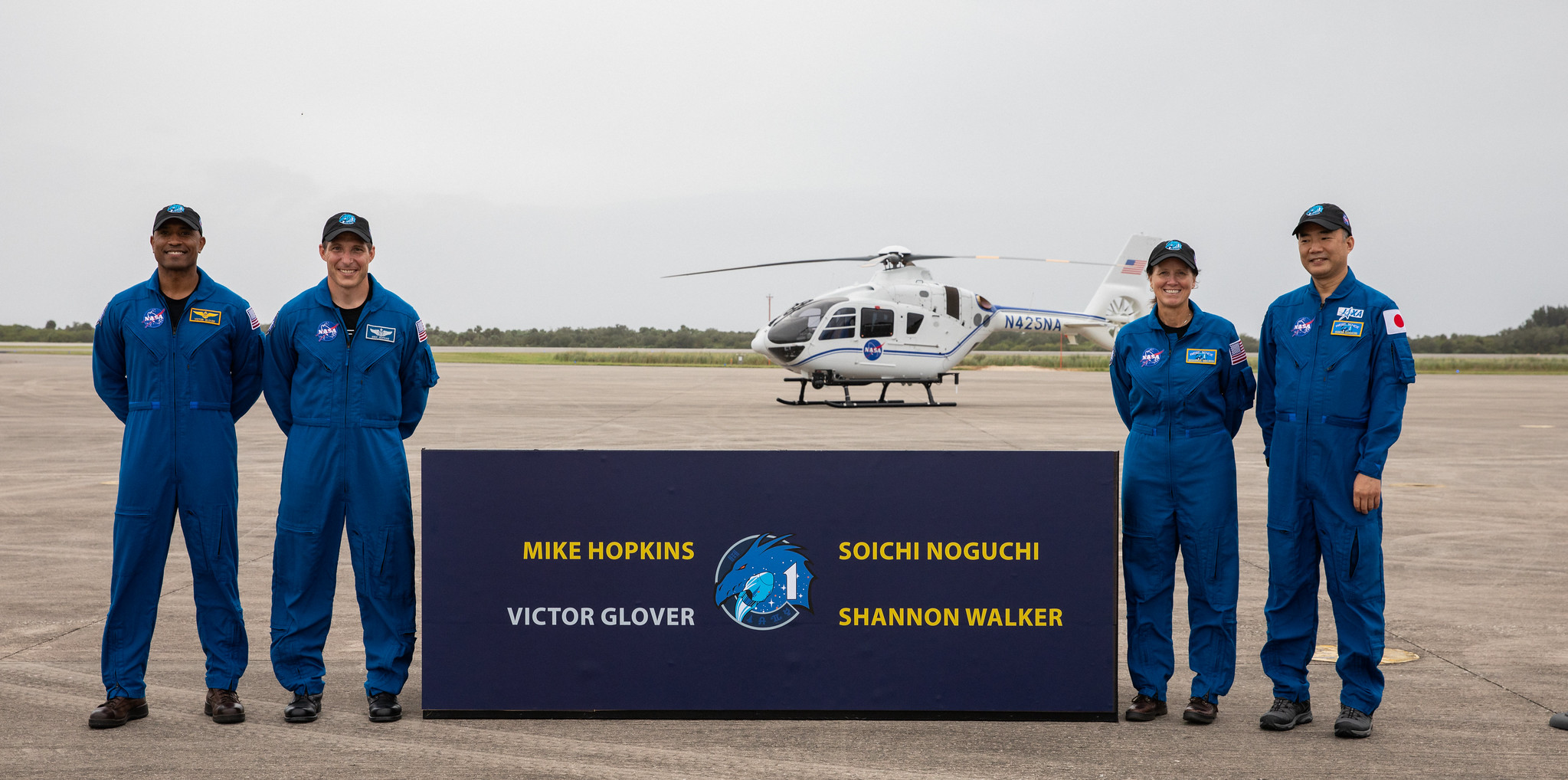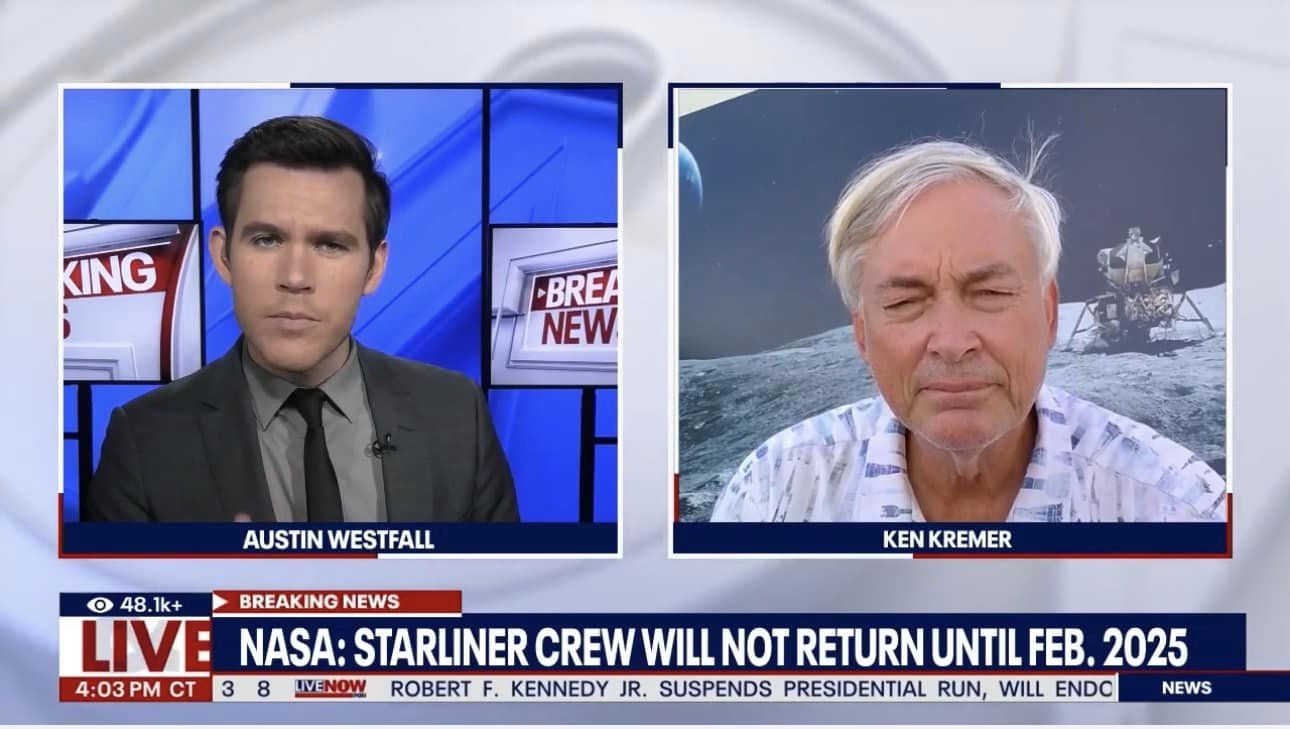
For SpaceUpClose.com & RocketSTEMTITUSVILLE/KENNEDY SPACE CENTER, FL – SpaceX engineers successfully completed a crucial static fire test on the Falcon 9 rocket’s first stage engines Wednesday afternoon, Nov. 11 amidst continuing positively gloomy weather from Hurricane/Tropical Storm Eta impacting much of Florida including the Space Coast and is currently still targeting liftoff of the NASA Crew-1 mission with 4 astronauts on Saturday, Nov. 14 on their six month mission to the International Space Station (ISS) from Florida’s Spaceport.
The static fire test of the first stage engines was carried out at 3:49 p.m. ET Wednesday after being delayed from Monday and Tuesday due to weather impacts from Hurricane Eta and the need to fix a valve in the second stage engine.
The brief hold down static fire test of the brand new Falcon 9 rocket booster fully integrated with and capped by the commercial Crew Dragon Resilience spacecraft took place Wednesday at 3:49 p.m. ET today under truly gloomy and very hazy weather conditions from Eta – and the exhaust plume was hardly visible right at the opening of the 6 hour long test window.

I watched the mid-afternoon engine test Wednesday from nearby in Titusville, Fl about a dozen miles away across the Indian River lagoon and observed the exhaust plume and vapor cloud emanating from the bottom of the booster – just barely visible in the afternoon haze with choppy waves and surf.
From a distance the test appeared normal – however as always we awaited SpaceX confirmation of a good result.
Almost 90 minutes later SpaceX did confirm a good test and targeted launch for Nov. 14 – and also indicated that weather conditions from Eta are still a significant factor to be monitored.
“Static fire of Falcon 9 complete – targeting Saturday, November 14 at 7:49 p.m. EST for launch of Crew Dragon’s first operational mission to the @space_station with four astronauts on board. Teams will continue monitoring weather conditions for liftoff and along the flight path,” SpaceX tweeted.
Static fire of Falcon 9 complete – targeting Saturday, November 14 at 7:49 p.m. EST for launch of Crew Dragon’s first operational mission to the @space_station with four astronauts on board. Teams will continue monitoring weather conditions for liftoff and along the flight path
— SpaceX (@SpaceX) November 11, 2020
A back up launch opportunity is available on Sunday, Nov. 15 with an instantaneous launch time of 7:27 p.m. EST Sunday (0027 GMT Monday).

The brief hold down hotfire test of the SpaceX Falcon 9 first stage rocket and Merlin 1D engines was run after the rocket was again raised early Wednesday morning – and is routinely done to confirm the readiness of the rocket for launch.
All 9 Merlin 1D first stage engines were ignited to generate approx. 1.7 million pounds of thrust for about 3 seconds or so
During the hold down static fire test, the rocket’s first and second stages are fueled with liquid oxygen and RP-1 propellants just like an actual launch, and a simulated countdown was carried out to the point of a brief engine ignition lasting around 3 seconds or so.

The weather outlook currently shows a 60% chance of acceptable conditions at launch time.
The Crew-1 team of NASA astronauts Michael Hopkins, Victor Glover, and Shannon Walker, along with Soichi Noguchi of the Japan Aerospace Exploration Agency (JAXA), landed via plane at the Launch and Landing Facility at Kennedy at 1:45 p.m. ET Sunday, Nov. 8 after departing earlier Sunday from Ellington Field near the agency’s Johnson Space Center in Houston.

Enjoy our Space UpClose photos of the SpaceX Falcon 9 and Crew Dragon vertical at pad 39A taken on Tuesday Nov. 10 from the KSC LC-39A Press site.

Upon their arrival aboard Resilience, the Crew-1 astronauts will become members of Expedition 64, joining NASA astronaut Kate Rubins, as well as Expedition 64 commander Sergey Ryzhikov and flight engineer Sergey Kud-Sverchkov, both of the Russian space agency Roscosmos who recently launched on Oct 14 aboard a Russian Soyuz capsule.
The Crew-1 mission is a major step for NASA’s Commercial Crew Program. Operational, long-duration commercial crew rotation missions will enable NASA to continue the important research and technology investigations taking place onboard the station.
Further details about the Crew-1 mission and NASA’s Commercial Crew Program can be found in the press kit online and by following the commercial crew blog, @commercial_crew and commercial crew on Facebook.
Watch Ken’s commentary at WESH 2 NBC TV News Orlando about the possible weather impact from Hurricane Eta on the launch and landing
https://www.wesh.com/article/eta-threatens-astronaut-mission/34647727

Watch for Ken’s continuing live and onsite reporting from KSC about the Crew-1 mission.
Watch Ken’s continuing reports about Crew Dragon Starlink, Commercial Crew and Artemis and onsite for live reporting of upcoming and recent SpaceX and ULA launches including Demo-2, Starlink, X-37B, Solar Orbiter, Mars 2020 and more at the Kennedy Space Center and Cape Canaveral Space Force Station.
Stay tuned here for Ken’s continuing Earth and Planetary science and human spaceflight news: www.kenkremer.com –www.spaceupclose.com – twitter @ken_kremer – email: ken at kenkremer.com
Dr. Kremer is a research scientist and journalist based in the KSC area, active in outreach and interviewed regularly on TV and radio about space topics.
………….
Ken’s photos are for sale and he is available for lectures and outreach events
Please consider supporting Ken’s work by donating at Patreon:
https://www.patreon.com/kenkremer


x



